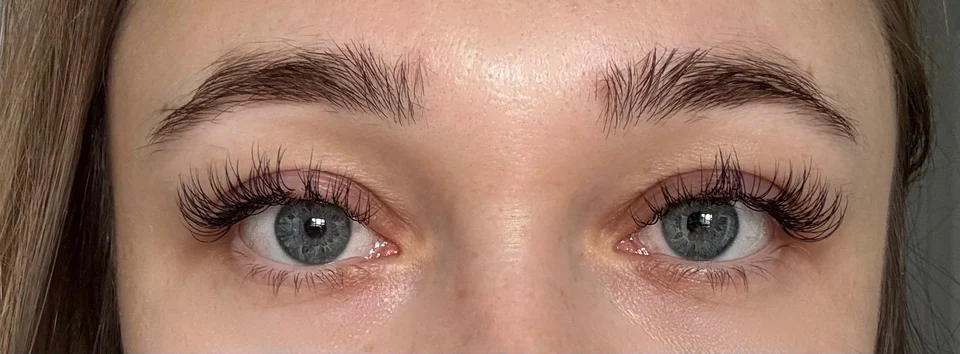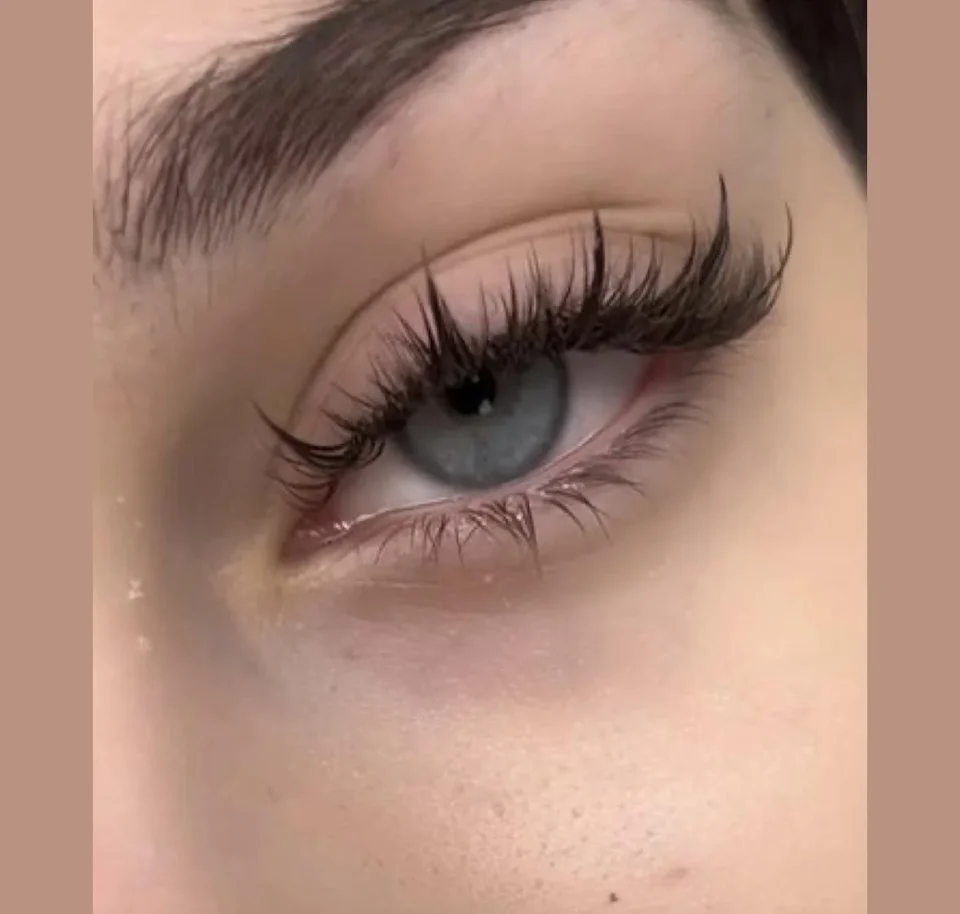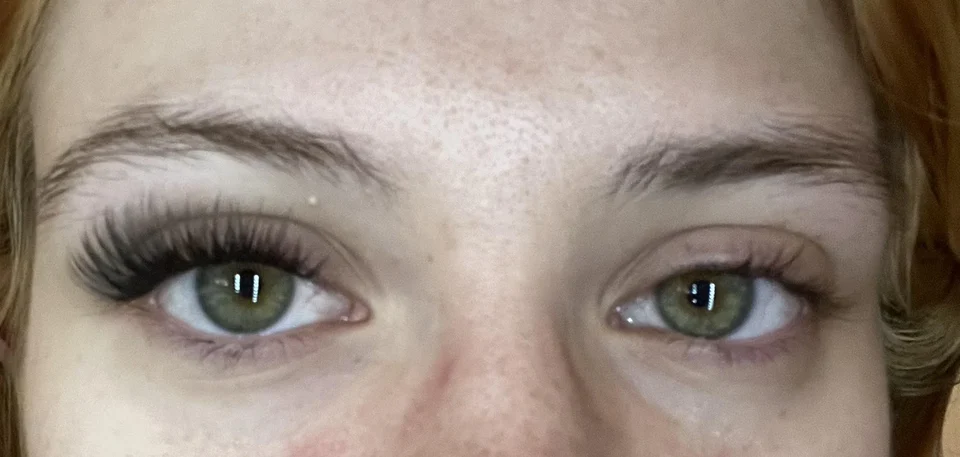Is Lash Blindness Real? What You Must Know Before Extensions
Eyelash extensions have become a global beauty trend, promising longer, fuller lashes with a professional touch.
However, as an experienced eye care consultant, I’ve encountered numerous cases of eye damage caused by improper lash procedures.
A condition often overlooked “lash blindness” can range from minor irritation to permanent vision impairment.
This article aims to unpack the real risks behind lash extensions and offer expert-backed prevention and treatment strategies based on international standards.
What is Lash Blindness?

Lash blindness is not actual blindness in the traditional sense, but rather describes any temporary or potentially permanent reduction in vision linked to eyelash extension procedures.
This condition encompasses various degrees of ocular surface irritation and damage caused by chemical exposure, allergic reactions, or physical trauma during lash treatments.
The term covers a wide range of symptoms from mild discomfort and blurred vision to serious corneal damage resulting from chemical or physical trauma.
Understanding this condition is crucial as eyelash blindness can progress from minor irritation to severe complications requiring immediate medical intervention.
Causes and Risk Factors
The development of lash blindness stems from several interconnected factors that create a perfect storm for ocular injury:
Chemical Irritation
The primary culprit behind most cases involves cyanoacrylate glue used in eyelash extensions. This adhesive releases formaldehyde vapor during the curing process, which can cause:
- Chemical-induced conjunctivitis when fumes come into contact with the eye surface
- Toxic chemical eye reaction in sensitive individuals
- Corneal abrasion from direct contact with uncured adhesive
Allergic Reactions
Many clients experience severe allergic reaction to eyelash glue, particularly those sensitive to:
- Formaldehyde allergen released during adhesive curing
- Cyanoacrylate eye toxicity from prolonged exposure
- Various chemical components in adhesive formulations
Physical Trauma
Improper technique or accidents can lead to:
- Eyelid trauma from instruments or adhesive contact
- Conjunctival erosion from rough handling
- Subconjunctival hemorrhage from excessive pressure
- Eyelash follicle damage from aggressive removal
Risk Factors
Several factors increase the likelihood of developing eyelash extension injury:
- Unregulated salons with poor lash technician hygiene
- Inadequate ventilation systems
- Pre-existing dry eye conditions
- Previous eye surgeries or sensitivities
- Failure to follow sanitary lash application protocols
Symptoms and Warning Signs

Recognizing the early signs of lash blindness can prevent progression to more serious complications. Common symptoms include:
Immediate Symptoms
- Burning, stinging, and tearing sensations
- Eye irritation with persistent redness
- Blurred vision and light sensitivity
- Feeling of foreign objects in the eye
- Difficulty opening the affected eye
Progressive Symptoms
- Keratoconjunctivitis with increasing discomfort
- Allergic blepharitis causing eyelid swelling
- Eyelash extension inflammation around follicles
- Persistent watery discharge
Emergency Warning Signs
Immediate medical attention is required for:
- Sharp, unrelenting pain
- Sudden vision changes or loss
- Severe swelling preventing eye opening
- Chemical burn to cornea symptoms
- Signs of infection risk in eyelash extensions
Potential Health Impacts

The consequences of eyelash blindness vary significantly depending on the severity and promptness of treatment:
Short-term Impacts
Most cases involve temporary ocular surface irritation that may include:
- Reversible vision blurriness
- Mild to moderate discomfort
- Temporary light sensitivity
- Contact dermatitis eyelash glue reactions
Long-term Risks
Without proper treatment, lash blindness can lead to:
- Corneal abrasion with potential scarring
- Chronic eyelash follicle inflammation
- Ocular epithelial damage affecting vision quality
- Eyelid margin injury with lasting effects
- Adhesive-induced keratitis requiring specialized treatment
Severe Complications
In extreme cases, eyelash extension complications may result in:
- Ocular tissue damage requiring surgical intervention
- Perioperative corneal abrasion during treatment procedures
- Permanent changes in ocular surface vulnerability
- Chronic dry eye syndrome
Prevention Strategies
Preventing lash blindness requires a comprehensive approach involving both professionals and clients:
Professional Standards
- Ensure professional lash application standards are met
- Maintain strict eyelash extension safety protocols
- Implement proper cosmetic procedure ocular risk management
- Use only approved eyelash extension material safety products
Client Precautions
Before any eyelash extension procedure:
- Disclose all eye conditions and allergies
- Request patch testing for eyelash glue allergy symptoms
- Avoid procedures during active eye infections
- Research salon cosmetic product regulatory compliance
Salon Selection Criteria
Choose facilities that demonstrate:
- Cosmetic eye safety awareness
- Proper ventilation systems
- Sterile equipment and workspace
- Trained technicians with current certifications
Alternative Options
Consider safer alternatives such as:
- Magnetic eyelash alternatives
- Temporary mascara-based enhancements
- Professional makeup application
- Lash lifting procedures with lower risk profiles
Do I Have Lash Blindness? (How to Self-Assess)
Are you experiencin:
- Burning, stinging, or excessive tearing in your eyes after a lash extension procedure?
- Blurred vision, light sensitivity, or difficulty opening your eyes?
- Redness, swelling, or a sensation of a foreign object in your eye?
- Persistent discomfort not relieved after an hour?
Warning signs that require urgent medical attention:
- Sharp pain that does not go away
- Sudden decrease or loss of vision
- Severe swelling or inability to open the eye
If you answered "yes" to any of the above, you should seek prompt advice from an eye care professional to prevent complications.
You can discuss this topic further on Reddit.
Immediate Actions and Treatment

When eyelash extension side effects occur, prompt action is essential:
First Aid Measures
- Rinse eyes immediately with sterile saline solution
- Avoid rubbing or scratching the affected area
- Remove false lashes if safely possible
- Apply cool compresses to reduce inflammation
Professional Treatment
Ocular emergency management may include:
- Lubricating eye drops for ocular allergic response
- Anti-inflammatory medications
- Antibiotics for infection prevention
- Specialized eyelash extension emergency treatment
Follow-up Care
Ongoing monitoring should address:
- Eyelash extension adverse effects assessment
- Eyelid hygiene importance education
- Recovery timeline evaluation
- Prevention strategies for future treatments
International Perspectives
Global approaches to eyelash extension safety vary significantly:
Regulatory Standards
- United States and European Union maintain stricter eyelash extension regulatory standards
- Many developing regions lack comprehensive cosmetic adhesive allergy guidelines
- Eyelash glue chemical components regulations differ internationally
Professional Requirements
- Some countries require medical aesthetician licensing
- Lash technician hygiene standards vary by region
- Continuing education requirements differ globally
Consumer Protection
- Cosmetic eye safety awareness campaigns
- Eyelash extension precautions education programs
- Superglue eye injury prevention initiatives
FAQs
1. What is lash blindness and how does it affect vision?
Lash blindness is not true blindness but refers to temporary or, in rare cases, permanent loss or reduction of vision due to complications from eyelash extension procedures. This condition results from chemical exposure (like adhesive fumes), allergic reactions, or physical trauma during lash treatments. The effects can range from mild discomfort and blurred vision to serious complications such as corneal damage that, if untreated, may impair vision quality.
2. Can eyelash extensions cause permanent eye damage?
Yes, eyelash extensions can cause permanent eye damage, but this is rare and usually results from severe allergic or chemical injuries, infections, or trauma that are not treated promptly. Potential consequences include corneal scarring, chronic inflammation, or even vision loss in the most serious cases. Early medical intervention often prevents long-term complications, but ignoring symptoms increases the risk of lasting harm.
3. What are the symptoms of lash blindness?
Symptoms of lash blindness may include:
- Burning or stinging sensations in the eyes
- Excessive tearing or watery eyes
- Persistent redness and irritation
- Blurred vision or light sensitivity
- Feeling like there is something in the eye
- Difficulty opening the eye, swelling
More severe signs include sharp, ongoing pain, sudden vision changes, or inability to open the affected eye, which require immediate medical attention.
4. How can I prevent lash blindness when getting eyelash extensions?
To prevent lash blindness:
- Choose a certified, experienced lash technician and reputable salon
- Ensure strict hygiene and proper ventilation during the procedure
- Request a patch test if you have sensitive eyes or allergies
- Avoid eyelash extensions when you have active eye infections or recent eye surgeries
- Discuss any prior eye conditions or allergies with your technician before the procedure
- Make sure only approved, safe adhesives are used.
5. What should I do if I suspect I have lash blindness?
If you suspect lash blindness:
- Rinse your eyes immediately with sterile saline or clean water
- Do not rub or scratch your eyes
- Remove false lashes carefully if possible, but do not force them
- Apply a cool compress to reduce swelling
- Seek urgent evaluation by an eye care professional, especially if you have persistent pain, vision changes, or severe swelling
Prompt action increases the chance of full recovery and prevents complications.
Conclusion
The pursuit of beauty through eyelash enhancements must never compromise eye health and safety. Lash blindness represents a serious concern that requires awareness, prevention, and prompt treatment when symptoms arise. Both consumers and beauty professionals share responsibility for maintaining eyelash extension safety standards.
By understanding the risks, recognizing warning signs, and choosing qualified professionals who prioritize cosmetic procedure ocular risk management, we can enjoy beauty trends while protecting our precious vision. Remember, no cosmetic enhancement is worth risking permanent damage to your eyes.
The key to preventing eyelash blindness lies in education, proper technique, and immediate response to any concerning symptoms. When in doubt, always consult with eye care professionals who can provide specialized ocular emergency management and ensure the best possible outcomes for your eye health.